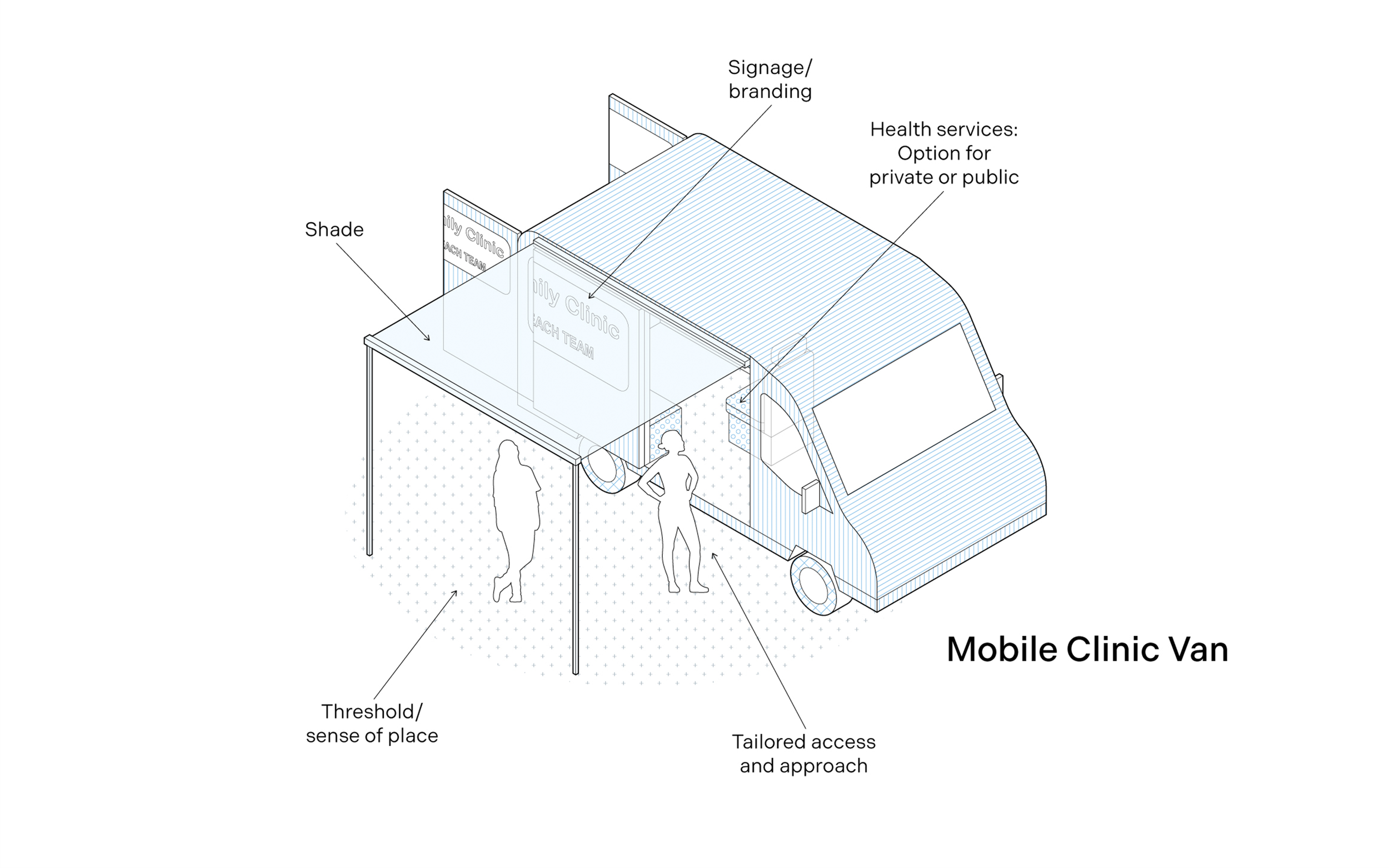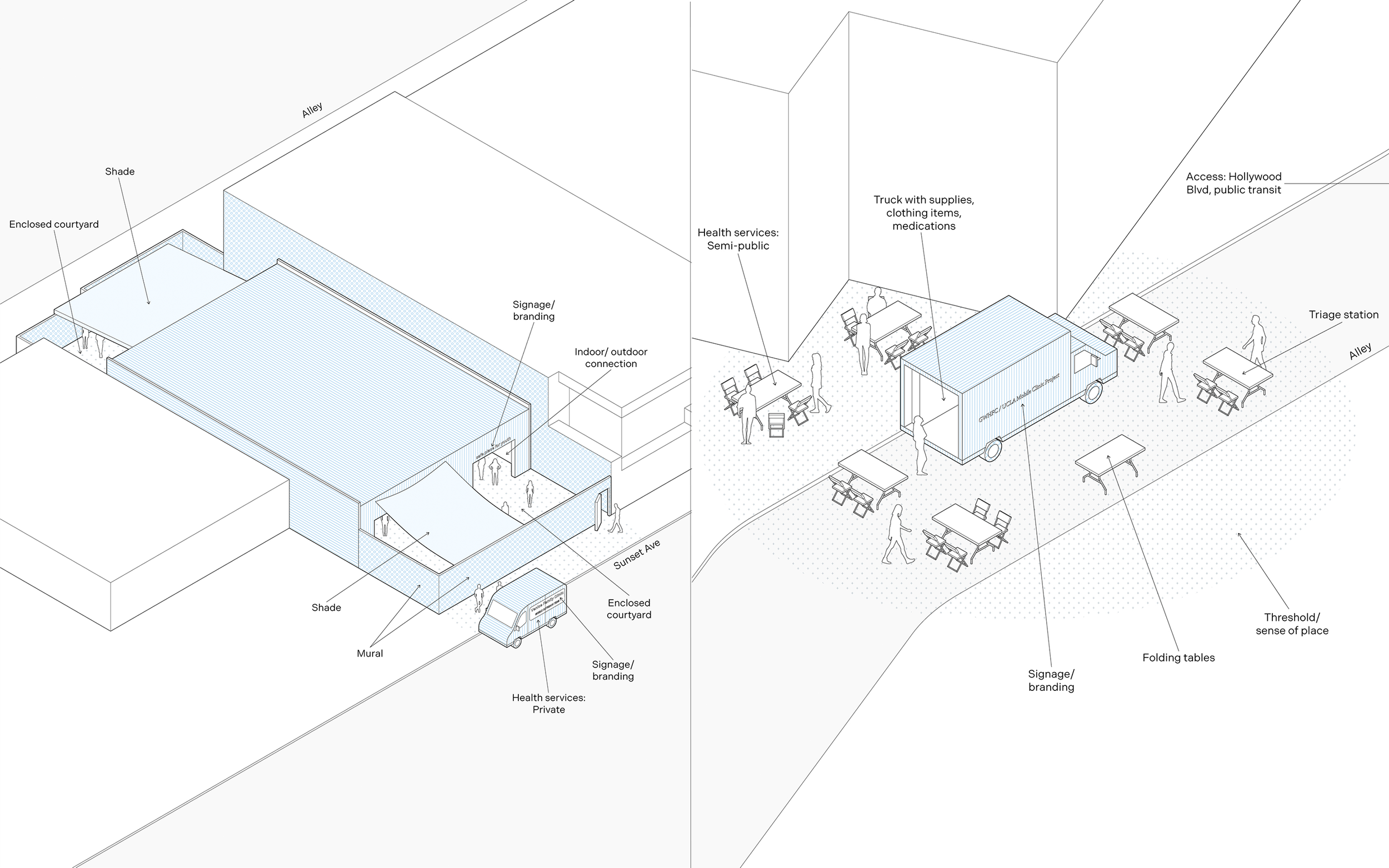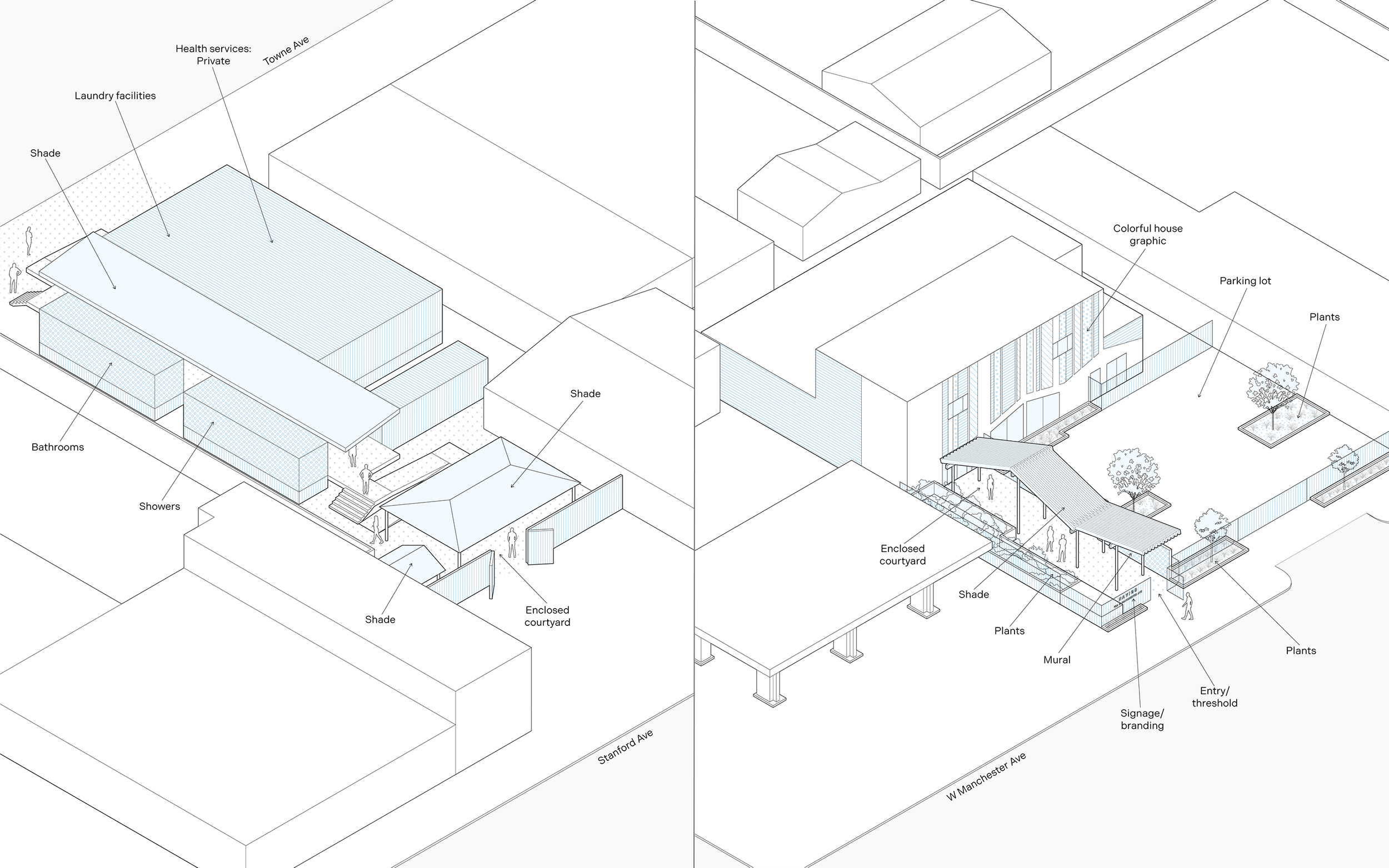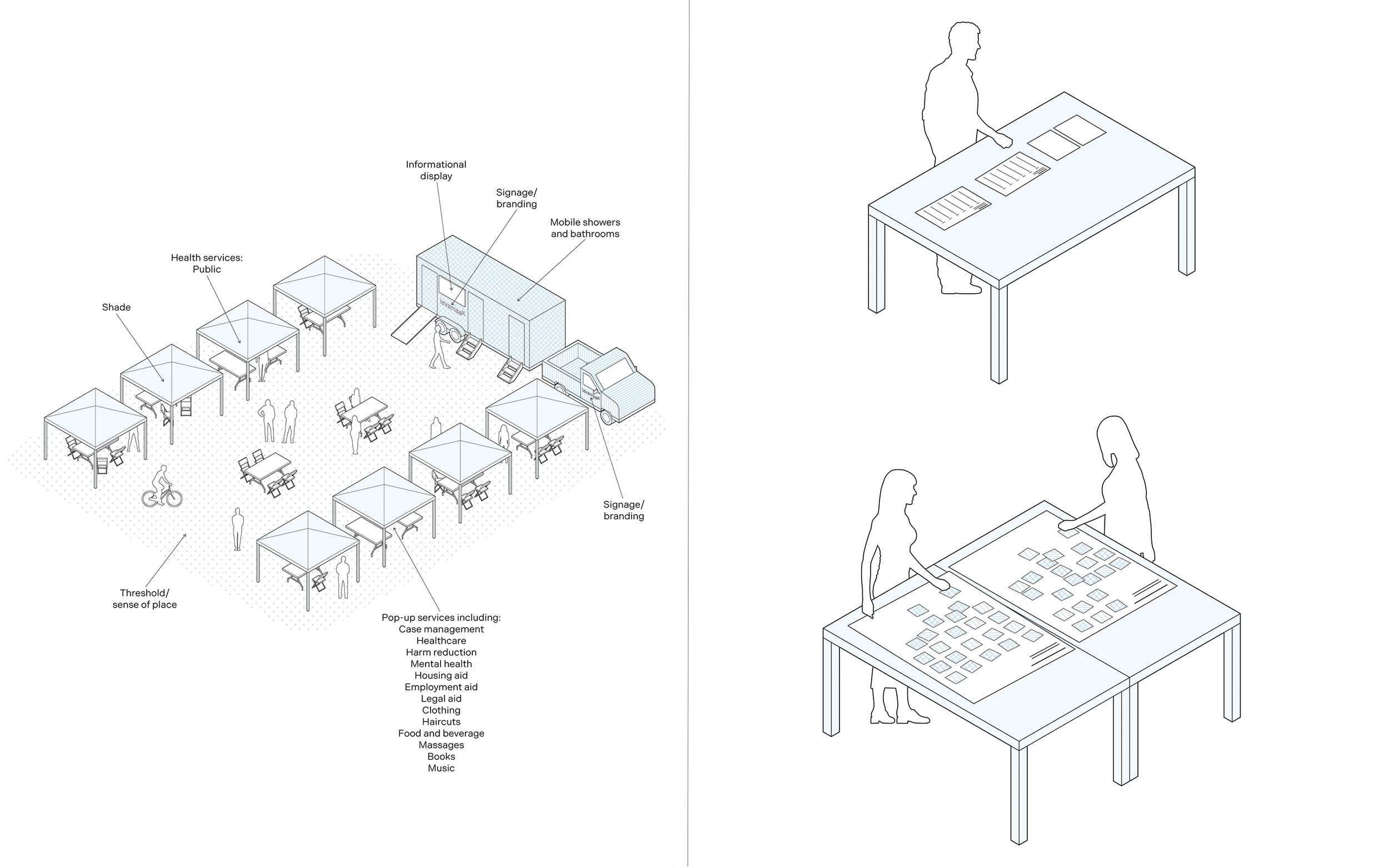Place to Be


Year: 2024
For the half-million people experiencing homelessness living in the United States, the “housing first” movement argues homelessness is a housing problem. But this basic truism remains an abstract ideal because housing production is notoriously costly, slow, insufficient, and does not always include needed support services. For those experiencing homelessness, the housing crisis is paired with a health crisis rooted in the ineffectiveness of traditional methods of service delivery in this context. There are myriad means by which the health and quality of life of our unhoused neighbors could be improved, starting with a better understanding of how to define their well-being. Place to Be offers guidance for public health providers, planners, designers, and policy makers seeking new, open-access ways to understand and serve the needs of unhoused Angelenos. With an interdisciplinary team of researchers from public health, architecture, and urban planning, as well as an intimate group of providers and unhoused constituents from a non-traditional health program, we undertook analysis of wellbeing metrics, key informant interviews, and participatory design research. In each we sought to better define wellbeing – a sometimes vague term in health – particularly in consideration of how understandings of wellbeing differ for unhoused people.
Credit
Dr. Dana Cuff, Dr. Burton Cowgill, Wendeliny Slusser, Alejandra Guerrero, Rayne Laborde Ruiz, Danielle Paulazzo, Naomi Yama, Jane Wu, Kinamee Rhodes
See also





